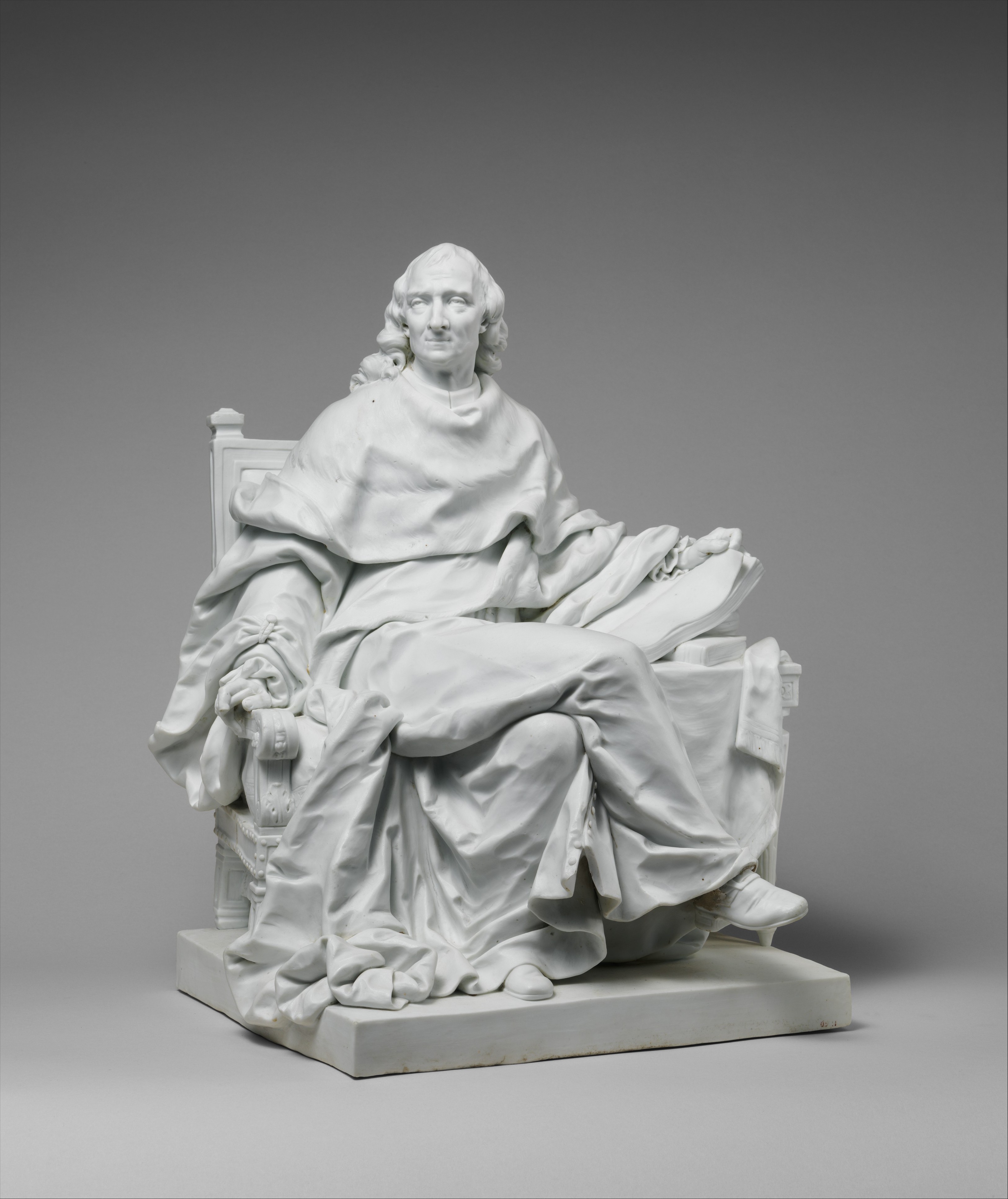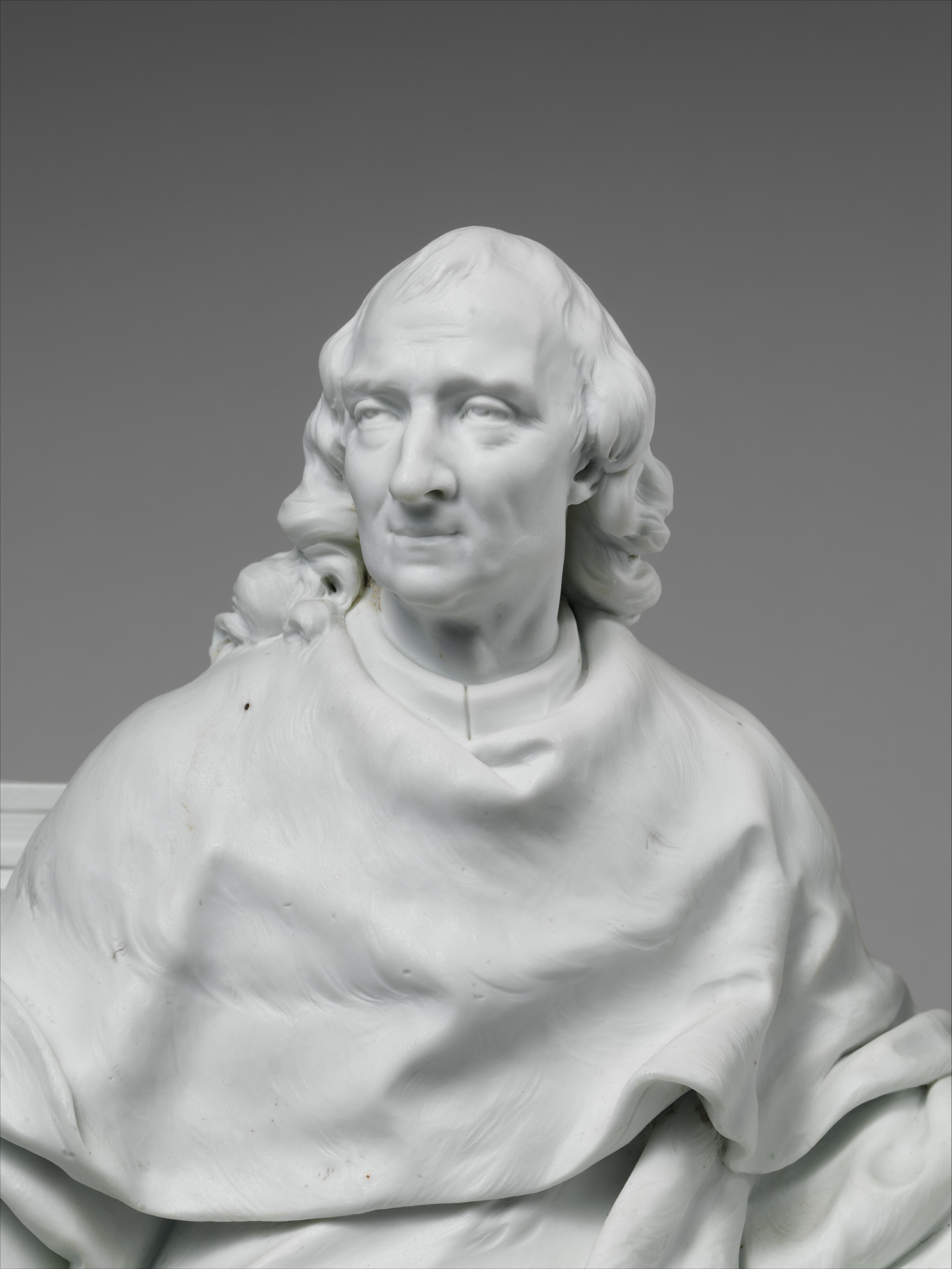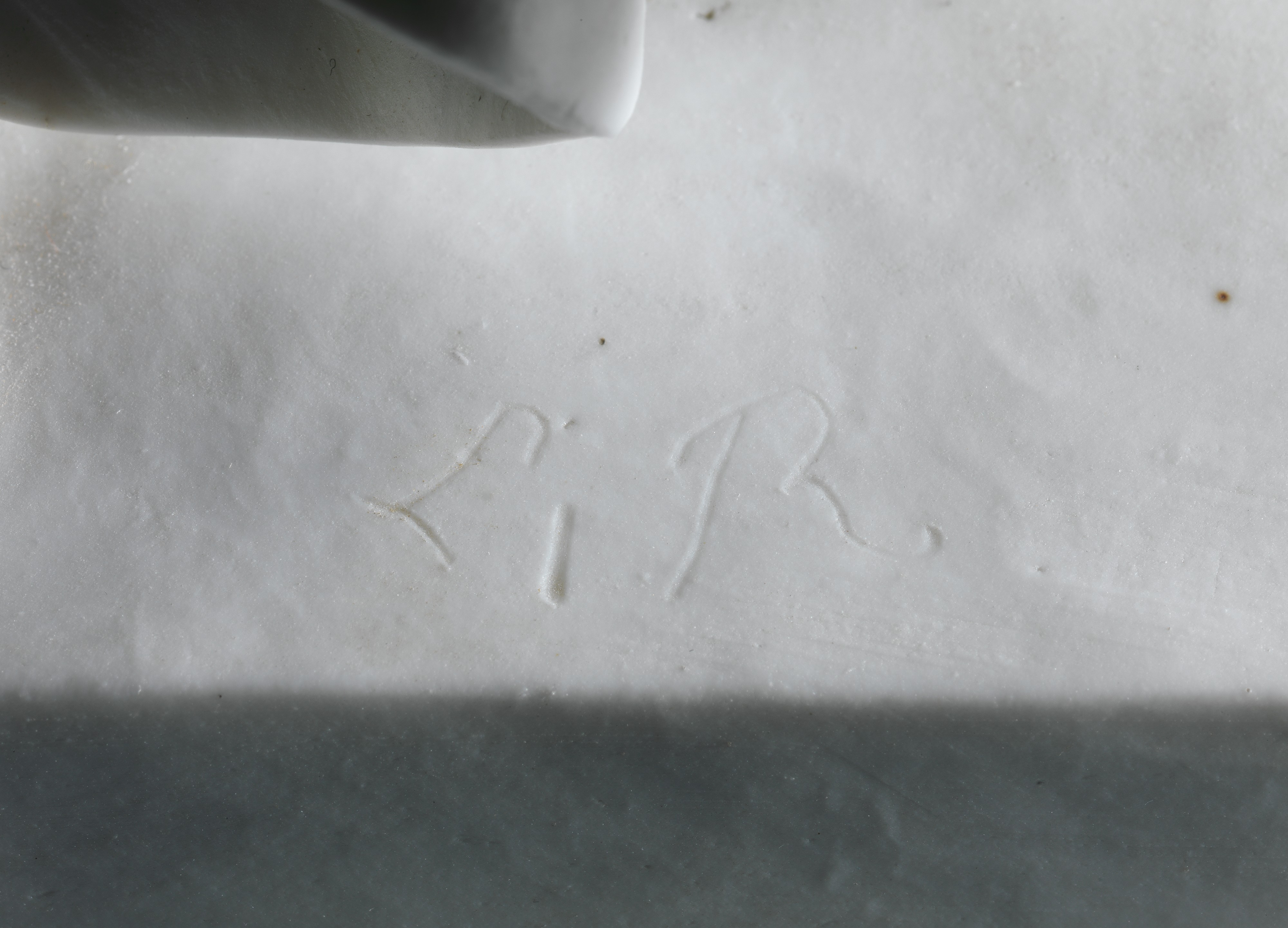Charles-Louis de Secondat (1689–1755), baron de La Brède et de Montesquieu
Manufactory Sèvres Manufactory French
After a model by Clodion (Claude Michel) French
One of the most remarkable sculptural projects of the eighteenth century was conceived by Charles Claude de Flahaut (1730–1809), comte d’Angiviller, in 1776. D’Angiviller, minister of buildings and the head of the royal manufactories, as well as the head of the academies of art and architecture to King Louis XVI (1754–1793), expressed his desire in a letter dated March 14, 1776, to Jean-Baptiste Marie Pierre (French, 1714–1789), the first painter to the king, to commission a series of lifesize marble sculptures representing the illustrious men of French history. Instead of choosing military heroes as the focus of this project, the series was intended to celebrate men distinguished by “their virtues, talents, and genius.”[1] While there was already a long tradition in sculpture of venerating great men, the selection of figures renowned primarily for their intellect and civic virtue represented a novel focus and must have been intended to reflect, however indirectly, the glories of the Bourbon monarchy.[2] Known in contemporary records both as the Grands Hommes de la France (Great Men of France) and the Hommes Illustres de la France (Illustrious Men of France), the series of sculptures was intended for the Grande Galerie of the Louvre, Paris, although this placement was never realized.[3] In initiating this ambitious sculptural project, d’Angiviller selected the historical figures to be represented, and Pierre chose the artists to execute the sculptures. Many of the prominent artists in France were awarded commissions for the “Great Men,” including Jean- Jacques Caffieri (French, 1725–1792), Clodion (Claude Michel, French, 1738–1814), Étienne-Pierre Gois (French, 1731–1823), Jean- Antoine Houdon (French, 1741–1828), and Augustin Pajou (French, 1730–1809) (fig. 50). Twenty-seven marble sculptures were ultimately produced, which are housed today among the Louvre, the Institut de France, and Versailles.
D’Angiviller must have been pleased with the sculptures that had been created by late 1781, since he indicated his desire that the Sèvres factory produce reduced versions of the marble sculptures with biscuit porcelain in a letter from January 1782 to Monsieur Regnier, the factory’s director. The appearance of white marble was closely approximated by biscuit porcelain, the term used to denote fired but unglazed porcelain, which allowed for crisp and detailed modeling in the absence of glaze. In this letter, d’Angiviller stated his belief that the small biscuit- porcelain versions would meet with significant commercial success and would be enthusiastically received by the public.[4] This proved not to be the case, but the series of biscuit sculptures that resulted from this undertaking rank among the factory’s most impressive achievements.
The sculptors of the lifesize marbles were requested to provide small terracotta versions of their works, from which the modelers at Sèvres could make piece molds in order to reproduce them in porcelain. The instructions to the sculptors were precise: a height of 20 pouces (approximately 20 inches) for each terracotta was specified, and each sculptor was required to supervise the execution of the molds taken from his terracotta model.[5] Work on the biscuit- porcelain series proceeded rapidly, as indicated by Louis XVI’s purchase of twelve “Great Men” at the end of 1783, the first examples to be produced. The factory’s sales records indicate that each of these figures acquired by the king was accompanied by a base decorated with a dark blue (beau bleu) ground color and simple gilding, and each figure with its base was valued at 600 livres, which was a very considerable sum.[6] The factory continued to produce different figures from the “Great Men” series in biscuit porcelain, eventually producing twenty- three before the end of the ancien régime, and Louis XVI appears to have purchased an example of each model.[7]
The biscuit figure of Charles-Louis de Secondat (1689–1755), baron de La Brède et de Montesquieu, the famous writer and political philosopher, may have been acquired by Louis XVI with the third delivery of the “Great Men” figures to Versailles.[8] The sculptor Clodion had provided his terra-cotta of Montesquieu to the Sèvres factory during the second half of 1784, after his marble sculpture had been exhibited at the Salon of 1783. The marble had been well received critically, including particular praise for the technical skill with which it had been executed.[9]
The remarkable range of surface treatments in the marble sculpture of Montesquieu, seen especially in the depiction of the different fabrics and the pages of the book, has been skillfully reproduced in the biscuit- porcelain version. The dignity and psychological presence given to the sitter in the marble have not been diminished by the reduction in scale or change of medium. Just as the marble reflects a tour de force of carving, the porcelain figure represents an astonishing feat of mold- making, assemblage, and detailed finish work. The sale price, without base, of 480 livres for this figure and for many of the other “Great Men” makes them among the most expensive sculptures produced by the factory, and given the complex compositions of all these figures, it is not surprising that their cost was so high.
Louis XVI’s biscuit figure of Montesquieu was displayed on a large round table in his private library at Versailles, along with figures of Pierre Corneille (French, 1606–1684), Henri François d’Aguesseau (French, 1668–1751), Jean de La Fontaine (French, 1621–1695), Mathieu Molé (French, 1584–1656), and Molière (French, 1622–1673), all on blue- and- gold porcelain bases. Other porcelain figures of the “Great Men” were placed on console tables and on a mantelpiece in other rooms in Versailles.[10] Louis XVI employed porcelain figures of the “Great Men” as diplomatic gifts, most notably to Gustav III (1746–1792), king of Sweden,[11] and to Prince Henry of Prussia (1726–1802).[12] The prominence thus accorded to these figures can be read as reflecting a growing acceptance of porcelain as a serious sculptural medium. While the factory began producing accomplished biscuit figures and groups after compositions by François Boucher (French, 1703–1770) and Étienne- Maurice Falconet (French, 1716–1791) in the 1750s, as well as larger-scale busts of the French monarchs in succeeding decades, the “Great Men” series displays a degree of ambition surpassing that found in other works.
Footnotes
(For key to shortened references see bibliography in Munger, European Porcelain in the Metropolitan Museum of Art. NY: The Metropolitan Museum of Art, 2018)
1 Scherf 1992.
2 Guilhem Scherf in Draper and Scherf 2003, p. 230.
3 The sculptures were stored in the Salle des Antiques in the Louvre, Paris, until the fall of the monarchy; Scherf 1992.
4 Brunet and Préaud 1978, p. 233, under fig. 325.
5 Scherf in Poulet and Scherf 1992, p. 288.
6 Eriksen and Bellaigue 1987, p. 346, pl. 152.
7 Baulez 1978, p. 372, nn. 16, 17.
8 Scherf in Poulet and Scherf 1992, p. 288; Préaud and Scherf 2015, p. 255. However, the sales records for January 4, 1785, list four “figures des grands hommes” among the king’s purchases without specifying who was depicted; Archives, Cité de la Céramique, Sèvres, Vy 9.
9 For a fuller discussion of Clodion’s marble, see Scherf in Poulet
and Scherf 1992, pp. 279–86, no. 57.
10 Baulez 1978, p. 371.
11 Ibid.
12 Savill and Dewsnap 2014, p. 32.
Due to rights restrictions, this image cannot be enlarged, viewed at full screen, or downloaded.
This artwork is meant to be viewed from right to left. Scroll left to view more.





